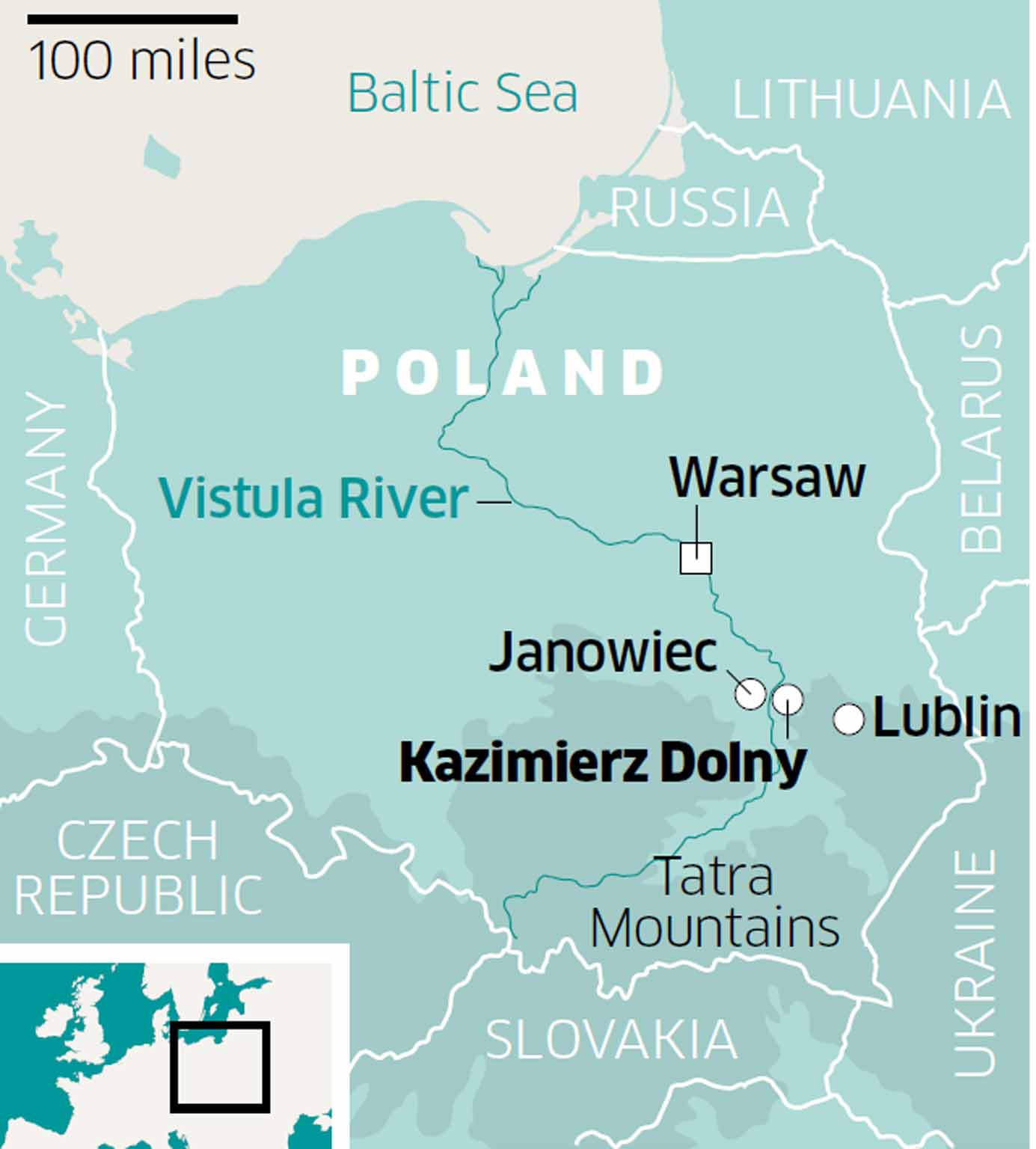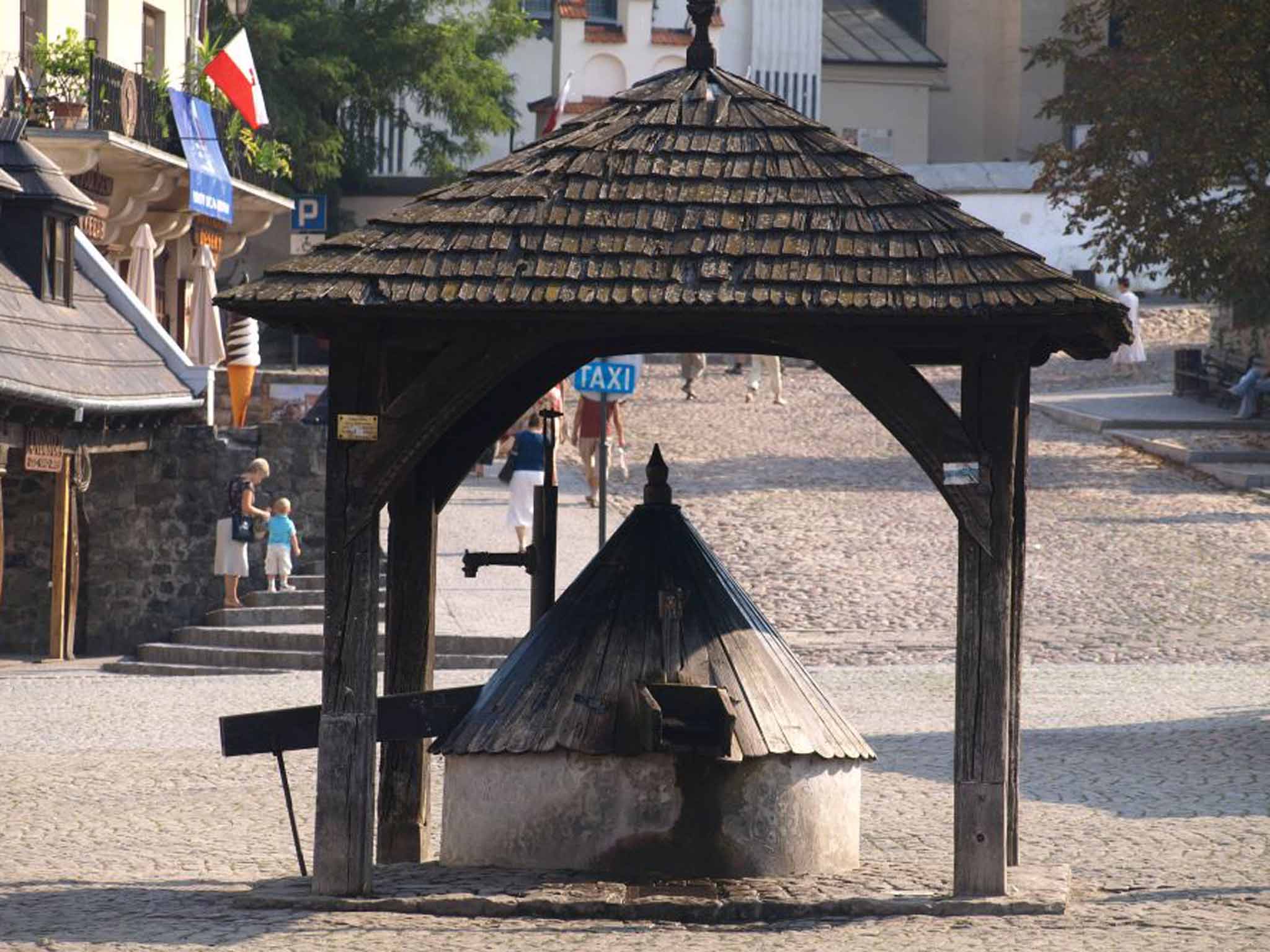Kazimierz Dolny: Creativity runs deep in this part of Poland
Kazimierz Dolny has a rich tradition as a centre for folk music, Jewish history, fine art and film. Simon Broughton pays a visit

Your support helps us to tell the story
From reproductive rights to climate change to Big Tech, The Independent is on the ground when the story is developing. Whether it's investigating the financials of Elon Musk's pro-Trump PAC or producing our latest documentary, 'The A Word', which shines a light on the American women fighting for reproductive rights, we know how important it is to parse out the facts from the messaging.
At such a critical moment in US history, we need reporters on the ground. Your donation allows us to keep sending journalists to speak to both sides of the story.
The Independent is trusted by Americans across the entire political spectrum. And unlike many other quality news outlets, we choose not to lock Americans out of our reporting and analysis with paywalls. We believe quality journalism should be available to everyone, paid for by those who can afford it.
Your support makes all the difference.I'd wanted to visit Kazimierz Dolny for more than 20 years, after I made a BBC documentary about the history of Jewish klezmer music and was struck by the photos and archive film of the town. It's arguably one of Poland's prettiest, a cobbled market square at its heart, lined with higgledy piggledy houses and the ornate façades of Renaissance mansions.
Creativity flows through the town's veins; as well as klezmer music, it's known for folk, with an annual Festival of Folk Bands and Singers (Festiwal Kapel i Piewakow Ludowych) that has been running for half a century. Held each summer (this year's is from 25-28 June), it features traditional bands from across the country who compete on the main square in front of a jury of specialists in the genre. The concerts are recorded for Polish radio.
"It's one of the few places you can get a taste of the traditional music and rural culture of Poland – from the Baltic Sea in the north to the Tatra Mountains in the south," Mateusz Dobrowolski, president of Warsaw-based ethnic arts association Transetnika, tells me later.
As for klezmer, that's thanks to Kazimierz Dolny's rich Jewish history; before the Second World War it was more than 50 per cent Jewish. The synagogue was destroyed by the Nazis in 1944, but was rebuilt in the 1950s and used as a cinema. Since 2008, the Synagoga has been displaying the city's Jewish history, and as I admired its collection of vivid photographs, I spotted one of the cobbled market square, the rynek, full of Jewish traders. With horses and carts, packs and bundles it looks more like the Middle Ages than the 1920s.

The town is named after Kazimierz the Great, who reigned from 1333 to 1370. Poles will often tell you he "found Poland built of wood, but left it built of stone" and this town is probably the best surviving evidence. It became a trading town for timber and grain – there are still monumental granaries with stepped roofs on the banks of the Vistula river – and, in 1334, King Kazimierz gave Jewish people legal protection and freedom of movement and trade, a rarity in Europe at that time. Krakow's Jewish quarter, Kazimierz, was also founded by him.

Thanks to its picturesque Jewish milieu, Kazimierz Dolny became a prime film location between the wars; New York-born Molly Picon shot Yidl Mitn Fidl (Yiddle with his Fiddle) here, which in 1936 became the first international hit of the brief flowering of Yiddish cinema. The film opens on the rynek where Picon and her father play klezmer music for coins. Movies are still celebrated here at the Two Riverbanks (Dwa Brzegi) festival, held jointly with the town of Janowiec, just across the Vistula.
Yet, there is another intriguing side to Kazimierz Dolny. In the early 20th century, it began attracting artists and well-to-do Warsaw residents, becoming a sort of St Ives-style artists' colony. Today, the town is stuffed with galleries and stalls selling mediocre paintings, but at Kamienica Celejowska (the Celejowska House Museum), I discover what fine artists were painting here before the Second World War. The old well that stands in the centre of the rynek has become a symbol of the town, its cone-shaped roof and shingled pavilion popping up in numerous artworks.

Among them is Teresa Roszkowska's Fantasy of Kazimierz, dating from 1929, which also features one of the grand Renaissance houses on the square and the steep hill beyond. Chaim Goldberg, a Jewish artist with a touch of Chagall in his work, left the town before the war, but went on painting it in the US for the rest of his life. His canvas, Landscape with White House, from 1929, depicts a grand building just down the street from the museum; another architectural landmark that continues to exert its charm.
I decide to round off my visit with a meal. There is still the odd nod to Jewish food – a restaurant called Bajgiel serves, yes, bagels among other specialities – but I've been tipped off about a hidden gem on ulica Krakowska.
Kuchnia i Wino is not only the best restaurant in town, but one of the best in Poland, with a menu by Wojciech Modest Amaro, who won Poland's first Michelin star in 2012 at his eaterie in Warsaw. Here, he serves Polish specialities with a twist: I had a chilled red cabbage soup with yoghurt followed by rolled beef with bison grass sprinkled with flower petals. It's a work of art, fit for Kazimierz himself.
Getting there
Kazimierz Dolny is a little over an hour by bus from Lublin, or three hours by bus from central Warsaw. Ryanair (0871 246 0000; ryanair.com) flies to Lublin from Stansted; Wizz Air (0330 977 0444; wizzair.com) from Luton, Glasgow and Doncaster/Sheffield.
More information
Join our commenting forum
Join thought-provoking conversations, follow other Independent readers and see their replies
Comments